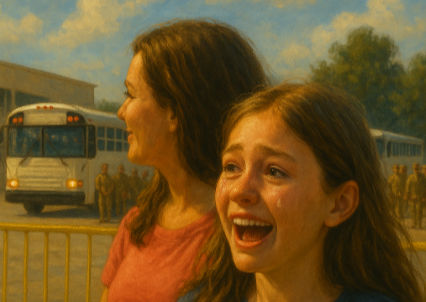Student Ambassador Programs and Their Connection to Military Kids
- Abby H.

- Sep 25, 2023
- 2 min read

Imagine being a new student at a big high school. Picture walking into a large cafeteria facing a room full of strangers and knowing there is no one to sit with at lunch. You're looking for that empty spot, hoping no one notices, but secretly hoping someone will ask you to join them.
This is an experience most military kids have faced after a move. It’s especially hard for teens to change schools during their high school years. They leave their friendships and support networks behind to reestablish themselves with new peers.
What could make this common scenario any easier? A peer-led student ambassador program. This is something that helped me greatly. This program offers a welcoming approach to new kids and allows new students to meet other students, become familiarized with the schedule, and fit into the cafeteria.
Student ambassador programs facilitate student-to-student connections between new students and current students. These programs can also specialize in matching students with certain backgrounds, such as military kids. The program also ensures new students know the ins and outs of their school campus. By being welcomed by the student ambassador program, new students might feel more confident to participate in activities and feel more supported.
At my current high school, Robinson High School in Fairfax, VA, we've created a student ambassador program called Rambassadors - named after the Ram, our school mascot. In total, we have about 200 members in our club, including a subgroup for military students, and the program continues to grow in scope and members every day. We involve school district employees such as military outreach liaisons and specialized educators to help us better understand the many resources and programs the school district, community, and military installations offer. We also hold activities specifically for military teens like Month of the Military Child breakfasts in April and tailgate parties at sports games, facilitating a connection between military kids and their civilian peers.
Ambassador programs spread positive benefits among those they come across. Personally, I feel if ambassador programs existed at other schools I've attended, I would have better adjusted to my school and felt less fear and isolation. I would have felt more welcomed and understood.
New students aren't the only people who can benefit from these types of clubs. Students who participate in the club can gain maturity and confidence. The club pushes teens to go out of their comfort zone and connect with others. And being uncomfortable can equal growth. Along with that, students will have the chance to learn how to lead and develop communication skills.
Morgan Stiller, the treasurer of Rambassadors, believes that being an ambassador has helped her, saying, “Rambssadors has greatly improved my leadership skills and continued my learning in communication. Through Rambassadors, I have learned that I can better overcome unforgettable situations and thrive in new conditions. Lastly, this club taught me that I can trust myself as my independence grows.”
Overall, student ambassador programs hold many positive attributes, benefiting schools, new students, current students, and more specifically military teens. New students can become quickly accommodated with the school they enter. The club provides quick connections, as easy as a friendly face in the cafeteria. Lastly, these clubs can embody the school’s values and aspirations with current students actively participating in their school's community.
.png)



Comments